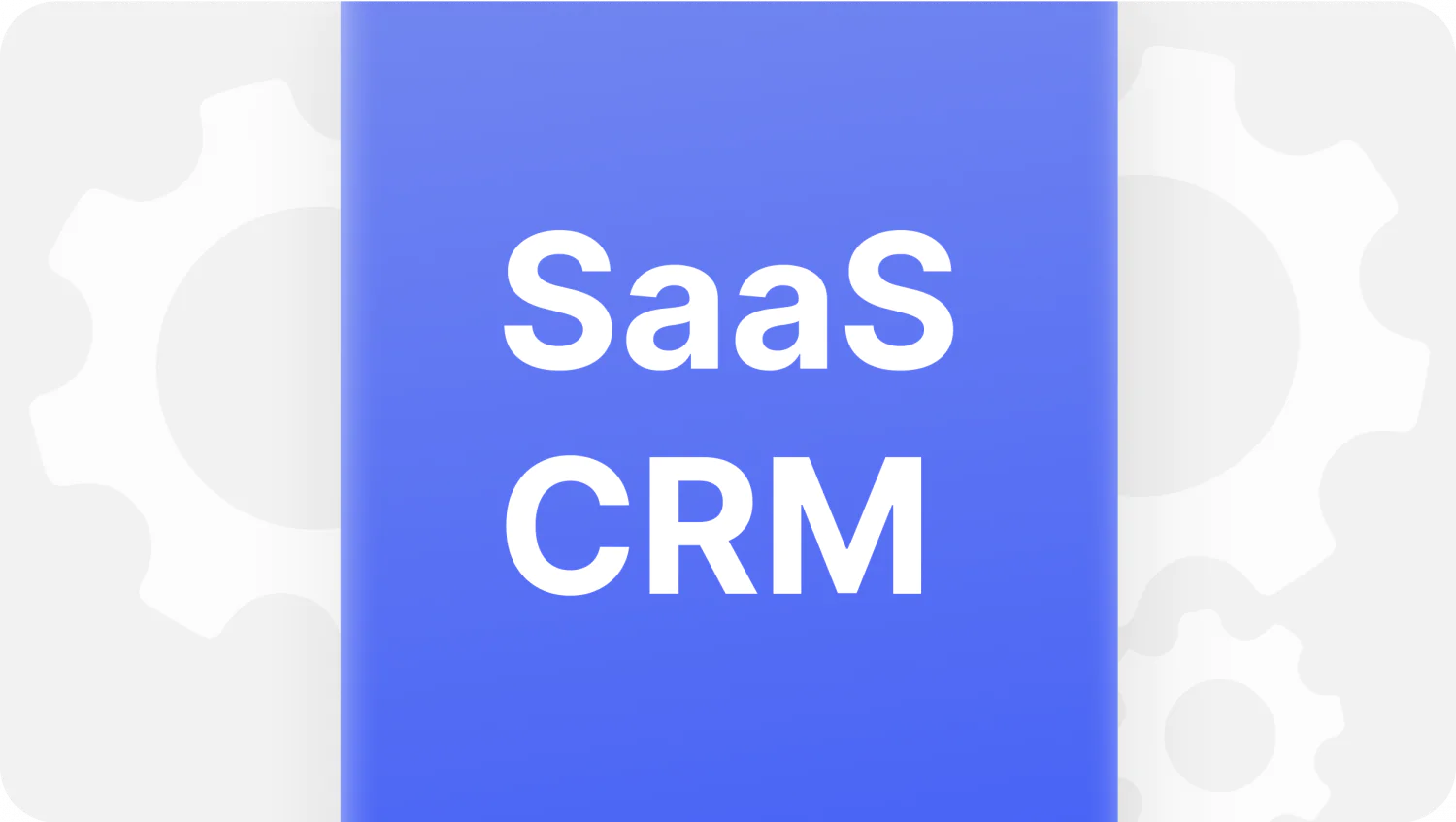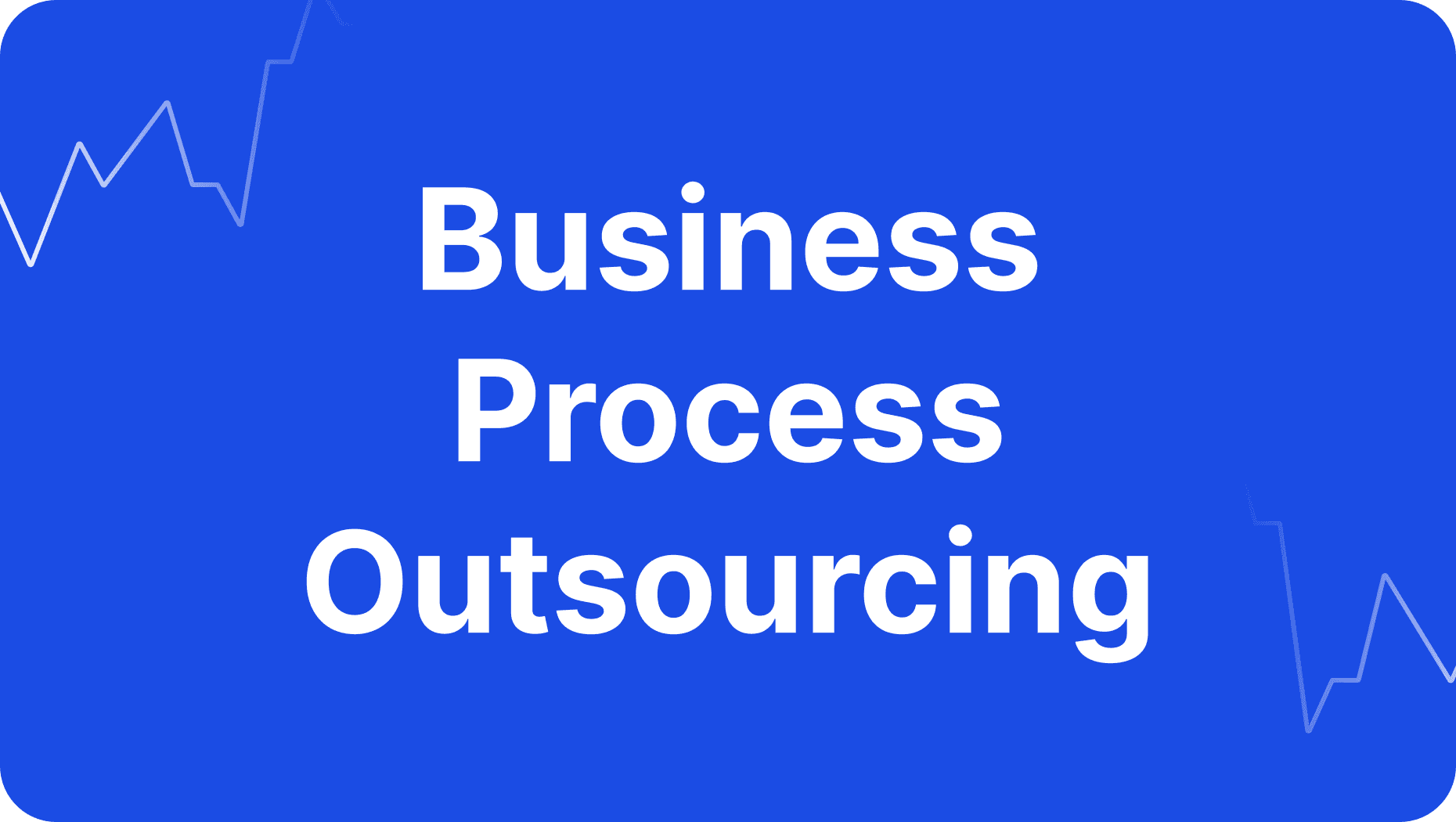Share
0
/5
(
0
)
Businesses are increasingly relying on technology for their processes and procedures, which helps manage the workflow to become seamless and efficient.
Customer relationship management system assists companies in storing and managing all existing customer data and drives the sales process. Organisations usually choose between two types of CRMs. One is on-premise, which requires installation on a local computer. The other type of CRM does not require installation and is operated on the internet directly, known as SaaS or software as a service. More organisations favour SaaS implementation because it is easier to manage.
So, if you have an enterprise and are looking for the right CRM system, here’s what you need to know about the SaaS CRM system.
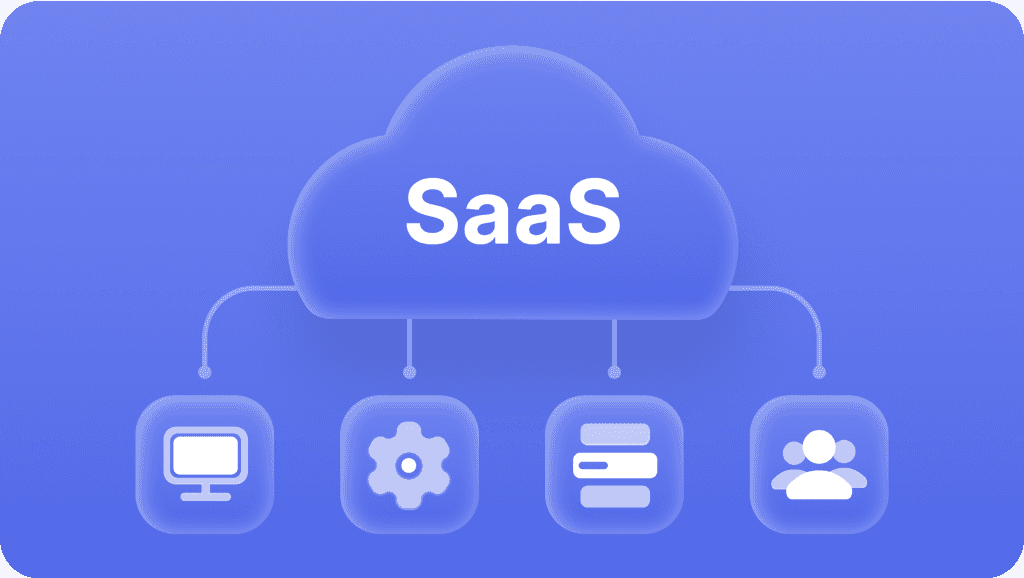
Key Takeaways
SaaS CRM is a customer relationship management system that is cloud-stored and directly accessed online.
Unlike traditional (on-premise) CRM software that must be installed and stored on the computer, SaaS CRM does not need any download and users can directly access and operate on the internet.
SaaS CRM providers take care of all maintenance and technical management, like hosting, integrations, and updates, which makes SaaS CRM a more cost-effective option.
[aa quote-global]
Fast Fact
In 2021, around 73% of all companies used SaaS at least once, and today, about 80% use at least one SaaS solution.
[/aa]
What Is a SaaS Solution?
CRM is a platform that helps companies store and manage information about their existing customers and sales process, create reports, and overwatch the workflow.
It allows the sales team to have all clients’ information in one place to create personalised products and services, which can improve customer retention and organise the sales cycle.
In-house CRM software requires downloading and installation on every user’s PC, while the CRM SaaS systems do not require any download. All processes and data of SaaS CRM are cloud-stored, and users can directly access it on the internet.
Traditional CRM and SaaS CRM solutions serve similar purposes. However, a cloud-based SaaS CRM takes off the burden of maintenance and backend support from the user company to the provider company.
The SaaS CRM software provider runs the servers, manages storage, ensures the runtime, updates the operating system, and more. Therefore, the user company can focus completely on business operations and customer satisfaction.
On the other hand, a traditional CRM requires the user to manage the storage, conduct maintenance, and run integrations and applications.
Eventually, it becomes more expensive to install and use CRM software because it requires an additional workforce to do the maintenance tasks, which makes SaaS CRM systems a better deal for businesses regardless of their industry.
Areas Where SaaS Customer Relationship Management Is Used
Companies of all types require a CRM, and the market for that has increased over the years. The global CRM market was valued at $71 billion in 2023, recording an 11% increase from the previous year.
However, this trend is expected to grow with more technology adaptation in CRMs like artificial intelligence and smart automation. Reports are expecting the market to cross $157 billion by 2030.
SaaS solutions can serve companies of all types, and its tools help several departments. Brokerage companies use SaaS CRM for forex brokers to enlist clients in one platform and track their trading activities.
Therefore, brokers use CRM to build personalised offers for their clients and understand customer needs based on customers' behaviour. This also aids the sales cycle of contacting the leads, getting feedback, creating customised offers, and tracking activities.
Another marketing company benefits from SaaS implementation to create and monitor their marketing campaigns, categorise their targeting lists, and design services that better suit their needs.
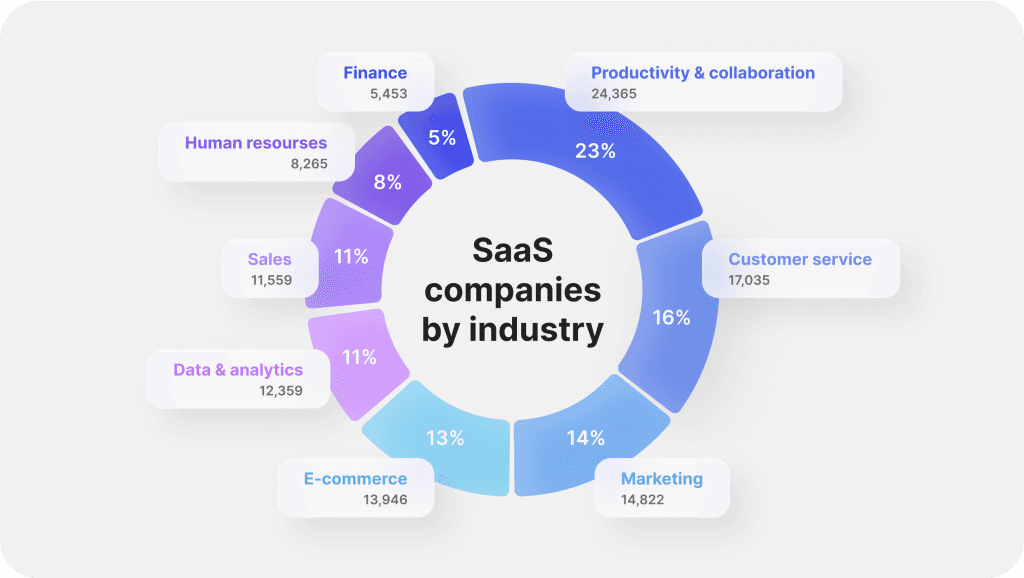
The Benefits of SaaS CRM Software
SaaS CRM software offers different customisation options, where companies can choose the features they want and benefit from the following advantages.
Workflow Automation
Using a SaaS CRM system smoothens the workflow by easily distributing tasks, automating email replies, chatbox communication, and more actions that you can customise based on selected triggers.
These automation options can be activated by initiating a course of action if specific condition(s) are met. For example, if a client signs up at your website, the SaaS solution will automatically send a welcome email and fulfil data entry immediately. This automates the sales cycle and makes the sales process much faster.
Saas CRM also assists in modifying pipeline management by automating appointment scheduling, live chat communication and more. Some tasks may take the workforce minutes or hours, while CRM system automation can execute these tasks in a few seconds.
Centralising Sales Data
SaaS system helps you substitute paper and pen or long-listed spreadsheets with a database of customers that usually comes with a search feature.
SaaS CRM plays a vital role in customer management, where you can find your clients in a simplified view, filter, categorise, and group your lists and conduct different actions.
Thus, you have all your sales data and customer information in one place. Centralising customer data makes tracking customer behaviour and sales activity easy, increasing your teams' productivity and efficiency.
Moreover, this feature allows other team members to view and operate on the same customer list instantly by accessing the cloud-based CRM.
Improving Customer Experience
Compiling customer data and activity in one place helps the customer service teams view the satisfaction level and minimise missing out on any customer’s complaints or dissatisfaction.
Additionally, unifying customer lists and analysing customer activity help create customised products and services, which can increase customer satisfaction.
SaaS CRM systems assist in identifying customer interactions on the website and with communications channels like email or chatbox, which helps understand customer behaviour and initiate proper communication.
This also allows the sales team to categorise clients and communicate with different listings. Most clients appreciate effective communication.
Custom Report Generation
SaaS systems deal with big data, and with access to unified customer lists, managers can create customised reports and have a numerical view of overall performance.
CRM users can apply different filters to generate various reports in a few seconds. This helps find gaps in performance and fix organisational flaws or underperforming teams.
Furthermore, these data help make informed business decisions like investing in a new business line, conducting training, or better tracking budgets.
Companies can create customer activity reports, like what is the most demanded product by customers and how much each client is spending, etc.
Easier Data Sharing
A centralised system makes storing and sharing information across multiple departments easy.
This encourages collaboration between different teams and the creation of joint-team tasks that require cooperation from different teams, especially when working online.
Also, CRM promotes data security and safety, where admins can control data storage and adjust users' access to sensitive information.
Saas CRM Or On-Premise CRM - Which One To Choose?
Business managers face this question when choosing the best platform to manage their workflow. However, the answer highly depends on the organisation’s size and the workforce.
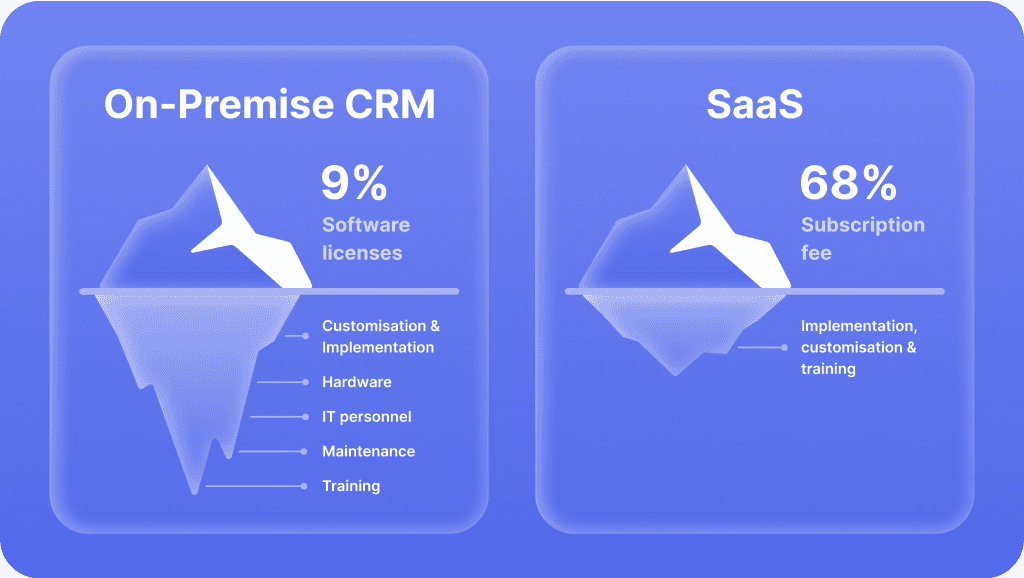
On-premise CRMs require a qualified workforce to operate and maintain the system. These tasks include installation, creating user and team accesses, distributing products and databases for each department, and managing technicalities like hosting sites, servers, and integrations.
On the other hand, the SaaS provider will do all the above-mentioned tasks, and business managers only need to share access to the departments and train the staff on how to operate with the CRM.
Using a SaaS is easier because there’s a little maintenance job needed from the user company, and it can be directly accessed from the internet without installing and occupying storage space.
Conclusion
Businesses use CRMs to facilitate the work processes and manage the workflow more easily and efficiently. CRMs gather all customer information, activity, and preferences in one place, where sales and marketing teams can create personalised products and services to increase customer retention.
One of the main benefits of SaaS CRM is that it is easier to manage than an in-house CRM. Users can access a SaaS CRM directly on the internet, while providers take care of all maintenance and technical requirements. Alternatively, typical CRMs require additional staff to work on these technicalities, making it more expensive.
Read also

